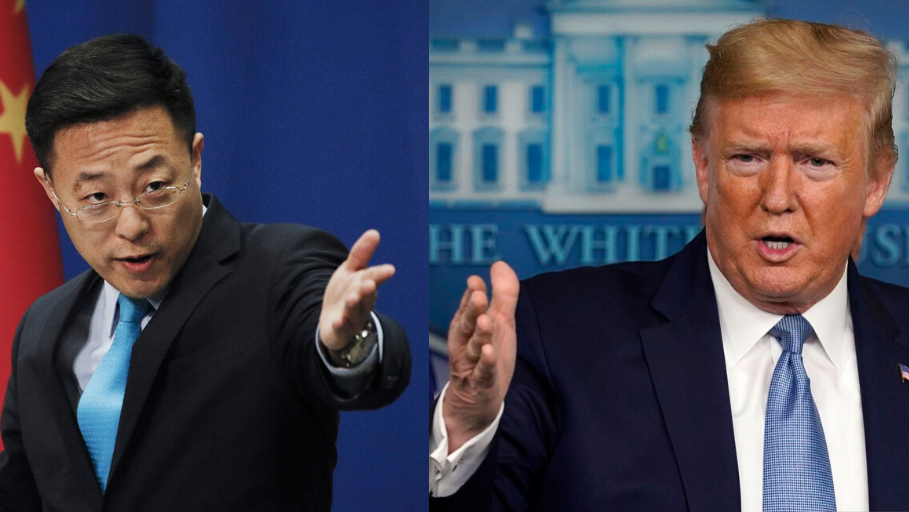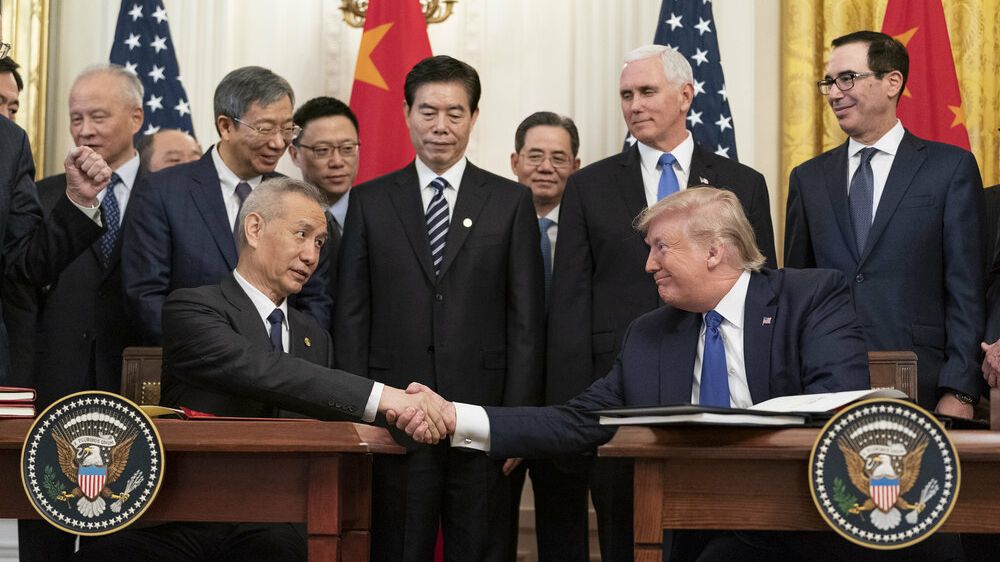Published 09 April 2020 | 3 minute read
The Coronavirus pandemic is reshaping the way the world lives, works, and trades. In particular, COVID-19 complicates US-China relations in three distinct but closely intertwined ways: 1) trade dependencies are being rethought, 2) prospects for reescalation of trade tensions are mounting, and 3) mutual trust is deteriorating.
This article was originally published in South China Morning Post on 8 April 2020.
Rethinking China supply chain dependency
Long before any of us heard the word “coronavirus”, a series of gradually escalating tariff rounds between the US and China beginning in 2018 created significant disruptions in what was then a roughly $635 billion trade relationship. Business executives were forced to rethink and in some cases reconfigure supply chains in order to avoid both the cost of the tariffs and the uncertainty created by the ever-present threat of additional tariffs. Intermediary and finished products which had been sourced from China began to increasingly enter the US from Colombia, Vietnam, Mexico, and elsewhere.
Many of the Trump Administration trade officials who authored the US’ more confrontational approach to China did so out of a core belief that deep economic integration between the two countries was a strategic mistake which had worked to the advantage of China and to the detriment of the US. The implicit (and in some cases explicit) rationale behind many of the US’ trade actions was to shift supply chains out of China — if not back to the US, then at least closer to home.
A pandemic changes everything
The onset of the coronavirus has intensified these predispositions and added an entirely new dimension: public health considerations are now front and center in trade relationships. Developing greater self-sufficiency in medical goods while minimizing supply risk has begun to take on literal “life and death” connotations for many countries.
The massive stimulus package just passed by the US Congress mandates the National Academies of Sciences, Engineering, and Medicine to review the heavily China-dependent US medical supply chain (ranging from drugs to equipment and devices) to identify national security and public health risks. According to the Peterson Institute, roughly half of the Personal Protective Equipment the U.S. imports comes from China, and the figure for mouth-nose protective equipment is closer to 70 percent.
Discussion is underway in the White House on strengthening “Buy American” requirements on pharmaceuticals and medical supplies. Prior to the pandemic, the US had already been actively considering withdrawal from the WTO Government Procurement Agreement (which limits “Buy American”-type policies). Although debate in the White House continues, the onset of coronavirus has strengthened the rationale for buttressing domestic medical and pharmaceutical production, while reducing dependence on imports.
As the full magnitude of the pandemic continues to manifest, expect to see an even stronger impetus – either by government directive or marketplace realities — to shift supply chains away from China, along with calls for nationalistic industrial support strategies.
A reignited trade war?
The Phase One trade agreement signed by the US and China in January deferred the most consequential and difficult issues to subsequent rounds of negotiations. Yet the pandemic — and the associated economic slowdown — is threatening implementation of even the comparatively “easy” Phase One obligations, especially those calling for roughly $200 billion in Chinese purchases of US products.
To its credit, China has recently stepped up its purchases of US wheat and LPG and has relaxed its restrictions on three types of beef hormones, as called for in the agreement. But they remain far short of the specified purchase levels, and despite provisions in the agreement which call for consultations if unforeseen events threaten implementation, it’s unclear how amicably any implementation shortfalls can be managed. The US would be entitled under the agreement to put tariffs back into place if China fails to meet its purchase obligations.
Perhaps of greater long-term consequence, the Phase Two negotiations which were intended to tackle core fundamental issues such as Chinese subsidies and industrial policies appear to have been put on indefinite “hold” thanks to the pandemic. Unless substantive negotiations can successfully address these issues, disputes will inevitably bubble to the surface again, and the prospect for re-imposition of rolled-back tariffs or the application of new tariffs will be back on the table.
The post-Phase One truce we’re currently enjoying might eventually become another casualty of the pandemic, and we could find ourselves once again in the midst of an escalating trade war.
Pandemic deepening mistrust
Any goodwill and positive momentum that was generated by the Phase One agreement has been eroded by harsh coronavirus-related recriminations that have flown back and forth between the two countries. President Trump has pointedly insisted on referring to the “China virus” (although for the moment he appears to have moderated), and the Chinese Foreign Affairs Ministry has alleged that there is no evidence that the virus originated in China, but was in fact maliciously planted in Wuhan by the US military. This is against the backdrop of both countries charging the other with a lack of transparency on infection rates, journalists being expelled from both countries, and the passage of US legislation supporting Taiwan which has been predictably viewed as highly provocative by Beijing.
At some point, US and Chinese officials will have to sit across the table from each other and resume trade negotiations. The acrimony and mistrust spawned by the coronavirus vitriol will make their already difficult job that much more difficult.
A complicated path forward
The dis-integration of supply chains, the prospect for mounting trade tensions, and the antagonistic atmospherics between the US and China are unfortunately mutually reinforcing and will complicate the path forward. While both countries correctly focus on the challenge of the pandemic, a couple of modest steps could help limit the negative fallout on the trading relationship. An agreement to refrain from additional tariffs during the pandemic peak, a strong statement on the mutual commitment to undertake Phase Two negotiations as soon as is practical, and a dialing down on the inflammatory rhetoric would be constructive and welcome.
© The Hinrich Foundation. See our website Terms and conditions for our copyright and reprint policy. All statements of fact and the views, conclusions and recommendations expressed in this publication are the sole responsibility of the author(s).












